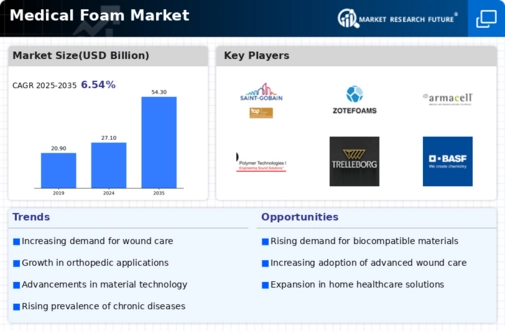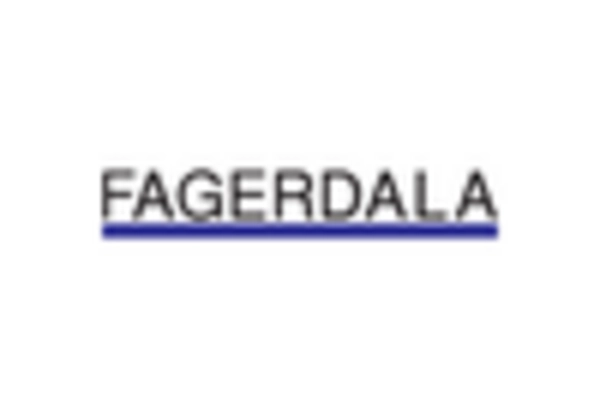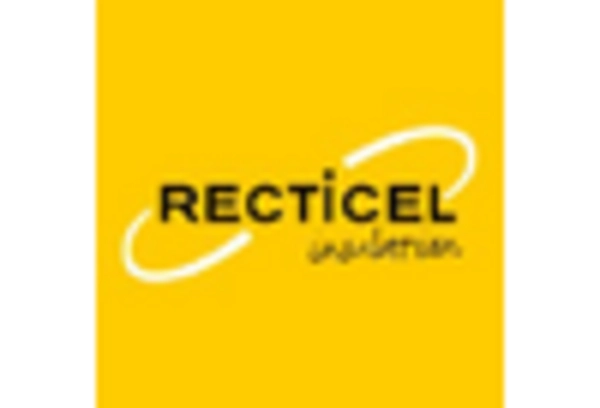Market Share
Medical Foam Market Share Analysis
In the fiercely competitive landscape of the medical foam market, companies employ various strategies to secure and enhance their market share. These strategies encompass innovation, strategic partnerships, geographical expansion, pricing tactics, sustainability initiatives, and robust marketing endeavors. Each of these elements plays a pivotal role in enabling companies to carve out a niche and thrive in this dynamic sector.
Innovation stands as a cornerstone strategy in the medical foam market. Companies continually invest in research and development to engineer foam materials with enhanced properties such as biocompatibility, antimicrobial resistance, and improved cushioning. Innovations in foam technology enable the development of specialized products tailored to meet the stringent requirements of medical applications, including wound care, orthopedic supports, and medical packaging. By staying at the forefront of technological advancements, companies can differentiate their offerings, attract discerning customers, and gain a competitive edge.
Strategic partnerships and collaborations are instrumental in driving market share positioning in the medical foam industry. Companies forge alliances with medical device manufacturers, healthcare providers, and research institutions to co-develop innovative solutions and expand their market reach. Collaborative efforts can lead to the creation of customized foam products optimized for specific medical applications, thereby enhancing value proposition and market competitiveness. Additionally, partnerships enable companies to leverage complementary expertise and resources, accelerating product development and market penetration.
Geographical expansion serves as a strategic imperative for companies aiming to bolster their market share in the medical foam segment. Establishing a presence in key regions, particularly emerging markets with burgeoning healthcare sectors, enables companies to tap into new opportunities and cater to diverse customer needs. Localized manufacturing facilities and distribution networks enhance supply chain efficiency, reduce lead times, and bolster customer satisfaction. By strategically expanding their footprint, companies can capitalize on growth opportunities and solidify their position in the global medical foam market.
Pricing strategies play a crucial role in shaping market share dynamics within the medical foam industry. Companies adopt competitive pricing tactics to capture market share and maintain profitability in the face of intense competition. This may involve offering flexible pricing schemes, volume discounts, or value-added services to entice customers. However, pricing strategies must be balanced with considerations of product quality, brand reputation, and cost structure to ensure sustainable business growth. Companies often employ dynamic pricing models and strategic promotions to optimize revenue and market share performance.
Sustainability initiatives are gaining prominence as a strategic imperative for companies operating in the medical foam market. With growing environmental awareness and regulatory pressure, there is a heightened focus on developing eco-friendly foam materials and manufacturing processes. Companies invest in research and innovation to reduce carbon footprint, minimize waste generation, and utilize renewable resources in foam production. By aligning with sustainability goals and addressing customer preferences for environmentally responsible products, companies can enhance brand reputation, attract eco-conscious consumers, and gain a competitive advantage in the market.
Effective marketing and brand positioning are essential elements of market share positioning strategies in the medical foam industry. Companies leverage targeted marketing campaigns, digital channels, and industry events to showcase their product offerings and highlight key differentiators. Building a strong brand identity based on quality, reliability, and innovation fosters customer trust and loyalty, driving repeat business and market share growth. Moreover, strategic branding initiatives enable companies to differentiate themselves from competitors, command premium pricing, and reinforce market leadership position.
Customer service excellence is paramount in establishing a competitive edge and driving market share growth in the medical foam market. Companies prioritize customer-centric practices, including responsive communication, timely delivery, and post-sales support, to foster long-term relationships and customer loyalty. By consistently exceeding customer expectations and delivering superior value, companies can secure repeat business, generate positive word-of-mouth referrals, and gain market share traction. Furthermore, proactive engagement with customers enables companies to gather valuable feedback, identify emerging trends, and adapt their strategies to evolving market dynamics.

















Leave a Comment